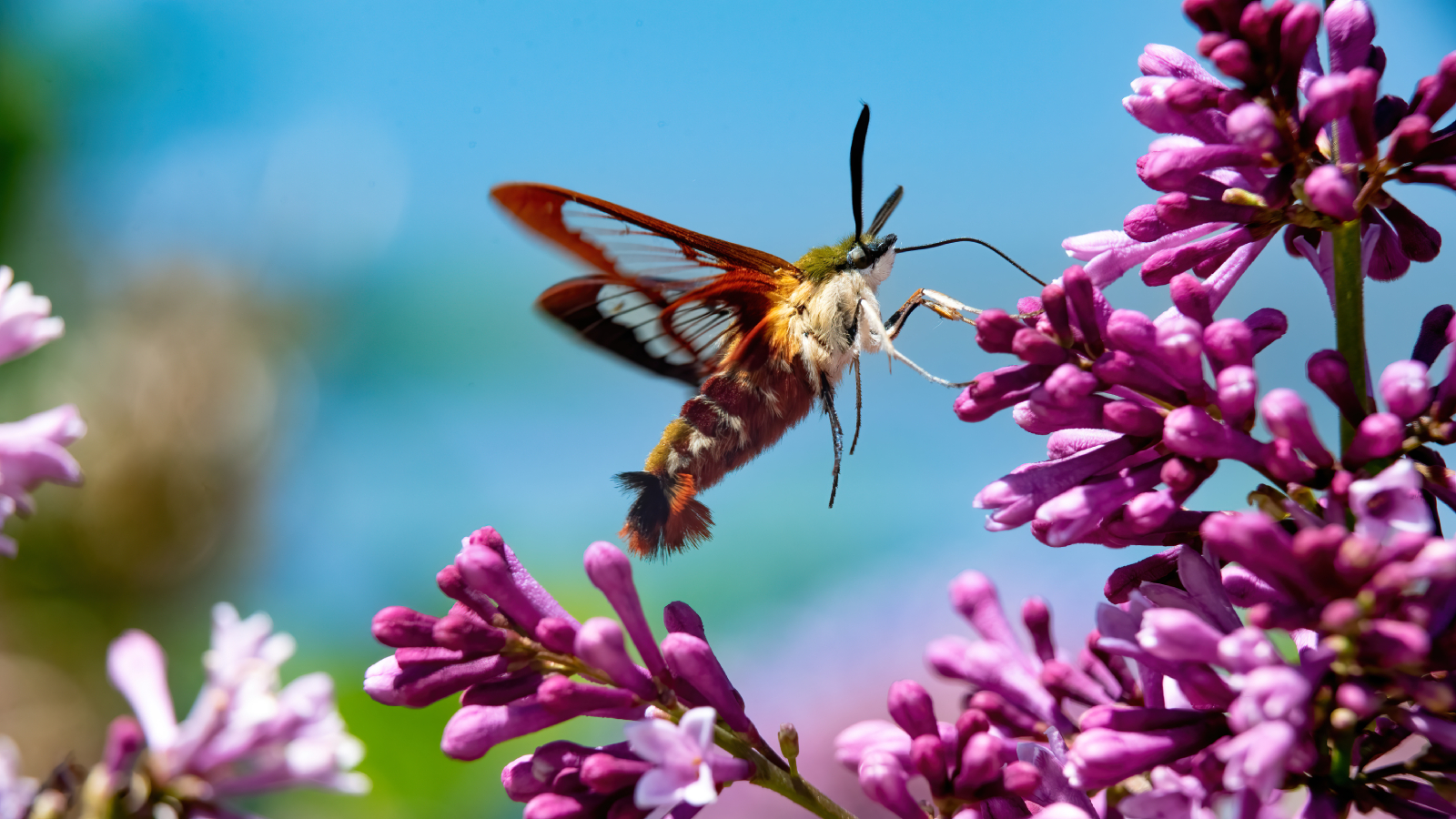Attracting Hummingbird Moth Pollinators To Your Garden
Hummingbird moth visitors are truly an unusual delight in the garden. I love seeing them in mine. Here's how to attract these pollinators to your landscape.


From containers to window boxes, the smallest of growing spaces can offer valuable habitat for local wildlife, as well as pollinating insects. While most people are familiar with the various types of butterflies which flutter by on occasion, hummingbird moth visitors are truly an unusual delight.
What Is a Hummingbird Moth?
'Hummingbird moth' is the common name frequently used to describe many members of the Hemarus genus. As would be implied, hummingbird moths are unique in their ability to hover near flowers as they drink nectar with a long proboscis. Various types of clearwing hummingbird moth insects, found among flower gardens, are no exception to this unique characteristic.
Much like actual hummingbirds, these insects emit an audible buzzing as their wings rapidly vibrate and help them to move about the garden. For this reason, many are often mistaken for bumble bees or carpenter bees. While hummingbird moths are not rare, they are frequently overlooked. These interesting creatures are most commonly seen in my own garden as I'm performing routine maintenance chores, such as deadheading spent blooms or picking cut flowers for a vase.
How can that be you ask - aren't these moths? Yes, they are, but unlike many other moths, clearwing moths feed during daylight hours.
How to Attract Hummingbird Moths
Planning a growing space that is attractive to hummingbird moths is much like the creation of any other pollinator garden. Plant a variety of flowers and they will come. I grow many types of flowering plants in my own garden.
Before planting, however, consider the use of both perennial and annual flowers. Variety among plantings will ensure the garden offers a steady source of nectar throughout the entirety of the growing season. When choosing which flowers to grow, opt for those having bright, vibrant blooms. Additionally, these hummingbird moth pollinators favor deep trumpet-shaped blooms like petunias and morning glory.
Native wildflower plantings are also an excellent resource for these garden insects. Flowering plants such as rudbeckia, bee balm, verbena, and honeysuckle seem to be especially attractive to these moths. Though beautiful, it will be important to remember that certain plants may be considered invasive in some growing regions. Before planting, always reference your local extension office to make sure you're only adding safe plants to the garden.
Gardening tips, videos, info and more delivered right to your inbox!
Sign up for the Gardening Know How newsletter today and receive a free copy of our e-book "How to Grow Delicious Tomatoes".

Tonya Barnett has been gardening for 13 years. Flowers are her passion. She has transformed her backyard into a cut flower garden, which she regularly chronicles on her YouTube channel http://www.youtube.com/@tonyawiththeflowers.
-
 Looking For Plants To Give You The Soft And Fuzzies? Try These 5 Fuzzy Leaf Plant Options
Looking For Plants To Give You The Soft And Fuzzies? Try These 5 Fuzzy Leaf Plant OptionsLovers of texture, drama, silver foliage and tactile plants will adore these special sensory garden additions. These fuzzy leaf plant options will leave you all aglow
By Susan Albert
-
 Get Ready For A Summer Of Hummers! Grow These Full Sun Hummingbird Plants and Flowers
Get Ready For A Summer Of Hummers! Grow These Full Sun Hummingbird Plants and FlowersIf you’re lucky enough to enjoy a sunny backyard, make sure you are maxing out on your pollinator opportunities and grow these full sun hummingbird plants and flowers
By Tonya Barnett